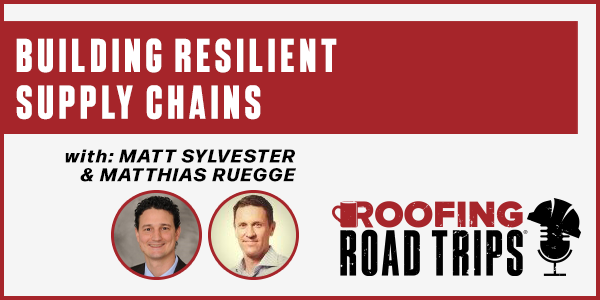Sign In
You're All Set
Welcome back! You are now signed in.
You have been logged out
You have been logged out due to inactivity
Forgot Password
Please enter the email address you used to create the account. We'll send you a link that lets you create a new password.
You're All Set
Please check your email. Click the link in the email to create a new password.
Reset Password
You're All Set
Success! Your password has been updated.
Change Password
You're All Set
Success! Your password has been updated.
How USG Builds a Resilient Supply Chain
While supply chain has different functions depending on the company, at USG, it consists of supply chain planning, operations, inbound-outbound logistics, and transportation of our entire product portfolio across the US and Canada.
Never Break the Chain
USG’s outbound logistics are very visible; most people are aware of whether a truck shows up on time or if inventory is available for an order. But it’s the planning and coordination going on behind the scenes of inbound logistics that ensures that USG’s supply chain is operating efficiently.
Inbound logistics makes sure that USG has the raw materials in place at plants to produce products while managing upwards of 80 different vehicle types; everything from rail to barges to trucks, all with a nationwide footprint. Although USG does not have a nationwide manufacturing footprint for all products, some product lines are able to tap into nationwide distribution through warehouses to redistribute inventory so they're more readily available.
The USG Solution
On a recent episode of RoofersCoffeeShop’s “Roofing Road Trips” podcast, host Heidi J. Ellsworth welcomed USG Sr. Director of Supply Chain, Matt Sylvester, and Sr. Director of Procurement, Matthias Ruegge.
In their conversation, Sylvester and Ruegge spoke about the steps towards both building and maintaining a resilient supply chain that are better able to resist disruption in addition to the intricacies of supply chains that many in the industry may not be aware of.
“There's a lot of things that can go wrong within supply chain,” says Sylvester. “One of the things I talk to my team about is ‘controlling the controllables’…working with our customers and understanding demand and demand spikes that may occur.”
Preparation is a large part of USG’s supply chain efforts, sometimes years in advance. This requires USG to work with its suppliers, but it also requires coordination within the company itself. Ruegge says that “close collaboration internally with our supply chain colleagues, with manufacturing, with our R&D colleagues [ensures] that we find an immediate response…everybody knows what needs to be done and who does what in order to make sure that we have products for our customers available…it's really about open communication, collaboration, and having a sense of urgency.”
Planning and supply chain go hand in hand. When things go wrong, developing plans beforehand allows USG to understand its constraints. USG supply chain teams have regular contact with sales teams to understand customer needs. When issues arise, that allows USG to make quick decisions before it can impact customers.





